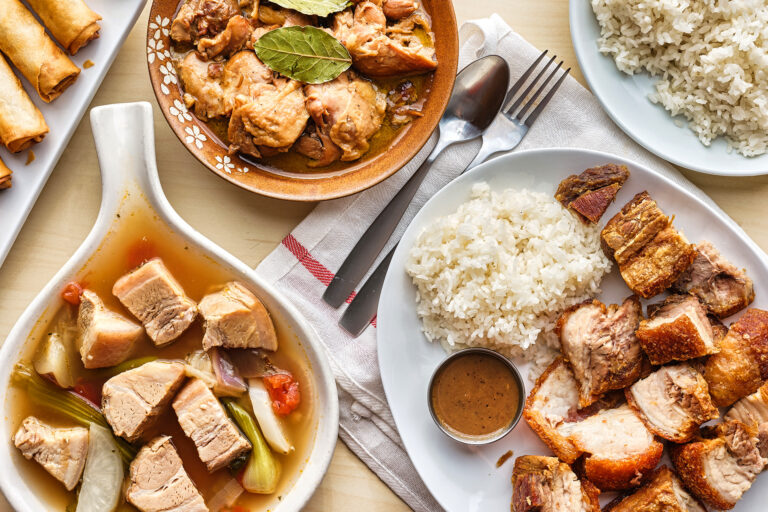Introduction: Filipino Cuisine
Filipino cuisine is a unique blend of flavors that reflects the country’s rich history and cultural diversity. It is a fusion of indigenous ingredients and cooking techniques, as well as influences from Spain, China, and other neighboring countries. Filipino dishes are known for their bold, savory, and sweet flavors, and the use of rice, coconut, and tropical fruits play a significant role in the country’s culinary tradition.
The Importance of Rice in Filipino Cooking
Rice is a staple food in the Philippines and is a crucial ingredient in many Filipino dishes. It is usually served alongside meat, vegetables, and other accompaniments. Filipinos cook rice in various ways, including steaming, boiling, and frying. They also use different types of rice, such as jasmine, glutinous, and brown rice, depending on the dish’s requirements. Rice is not only a source of carbohydrates in Filipino cuisine but also provides essential nutrients, such as vitamins and minerals.
Coconut: A Versatile Ingredient in Filipino Dishes
Coconut is another integral ingredient in Filipino cuisine. Filipinos use almost all parts of the coconut tree, including the fruit, milk, cream, water, and oil, in their cooking. Coconut is a versatile ingredient and adds a distinct flavor to Filipino dishes. Coconut milk and cream are commonly used in curries, stews, and soups, while coconut oil is used for frying and sautéing. Coconut water is also a popular beverage in the Philippines and is consumed as a refreshing drink.
Exploring the Variety of Tropical Fruits in Filipino Cuisine
The Philippines is home to a wide range of tropical fruits, and many of them are used in Filipino cooking. Some of the popular fruits include mangoes, bananas, pineapples, papayas, and jackfruits. These fruits are used in various ways, either as an ingredient or a side dish. For example, mangoes are used in salads, desserts, and smoothies, while pineapples are used in sweet and sour dishes. Filipino cuisine also includes lesser-known fruits, such as calamansi, guyabano, and santol, which add unique flavors to dishes.
Traditional Filipino Dishes that Highlight Rice, Coconut, and Tropical Fruits
Several traditional Filipino dishes highlight the use of rice, coconut, and tropical fruits. Adobo, a popular Filipino dish, features chicken or pork cooked in a marinade of soy sauce, vinegar, garlic, and bay leaves. Coconut milk is also added to create a creamy texture. Another classic dish is sinigang, a sour soup made with meat or seafood and a variety of vegetables, including tomatoes, onions, and kangkong (water spinach). Tamarind or calamansi is used to give the soup its signature tartness. Buko salad, a dessert made with young coconut, fruit cocktail, and cream, is another favorite Filipino dish that showcases the use of coconut and tropical fruits.
Conclusion: A Flavorful and Nutritious Culinary Experience
The use of rice, coconut, and tropical fruits in Filipino cooking adds a unique flavor and nutritional value to dishes. Filipino cuisine is a blend of indigenous and foreign influences, creating a diverse culinary experience. The country’s cuisine showcases its rich history, cultural diversity, and agricultural abundance, making it a must-try for anyone looking for a flavorful and nutritious culinary experience.

